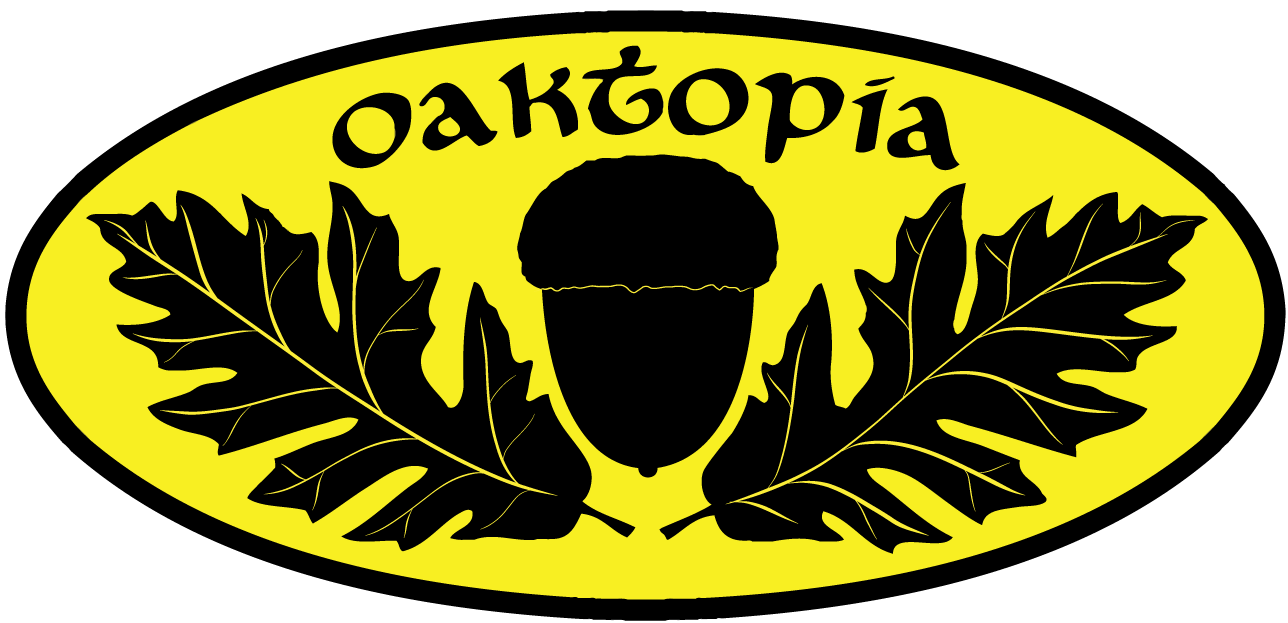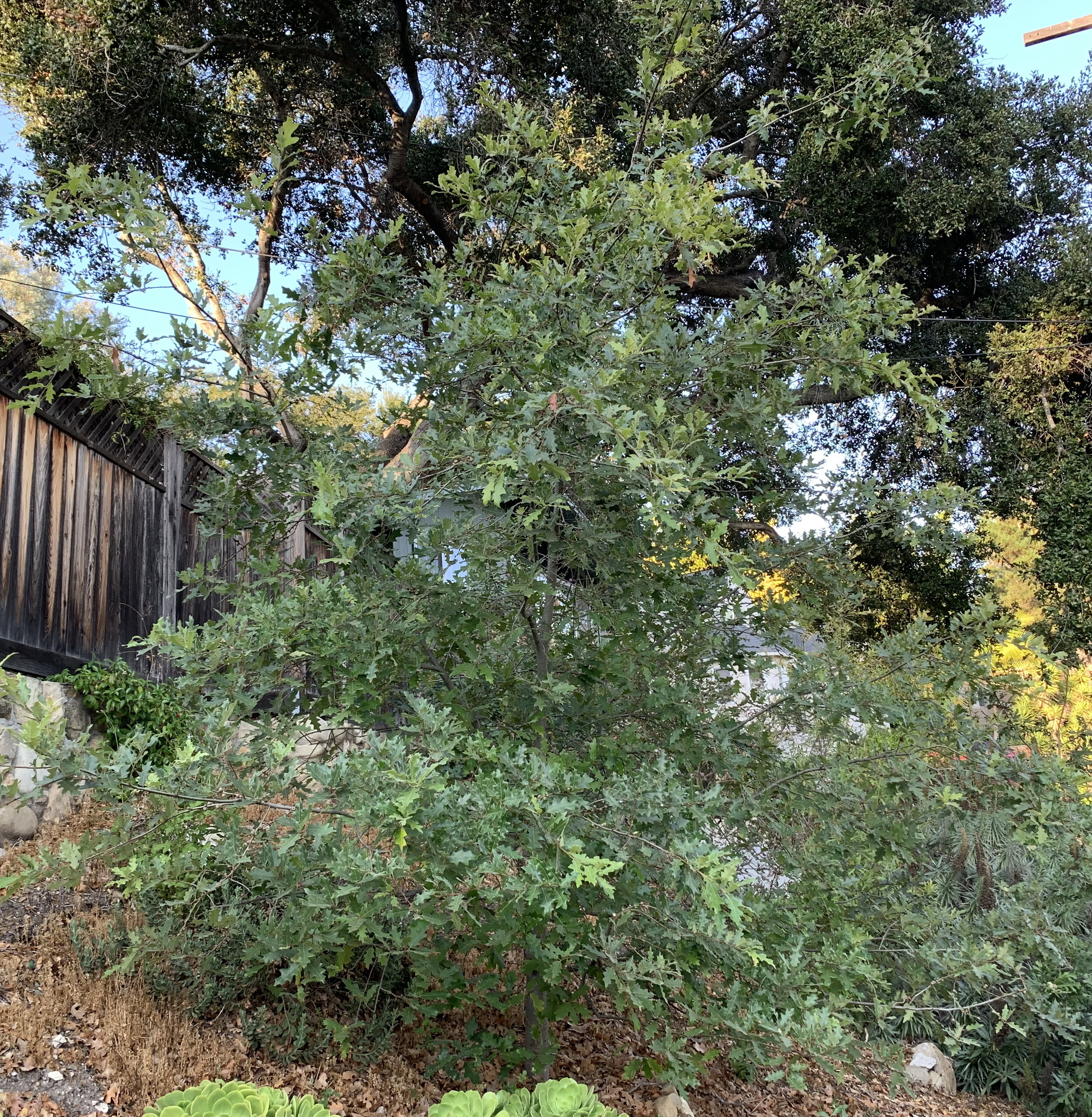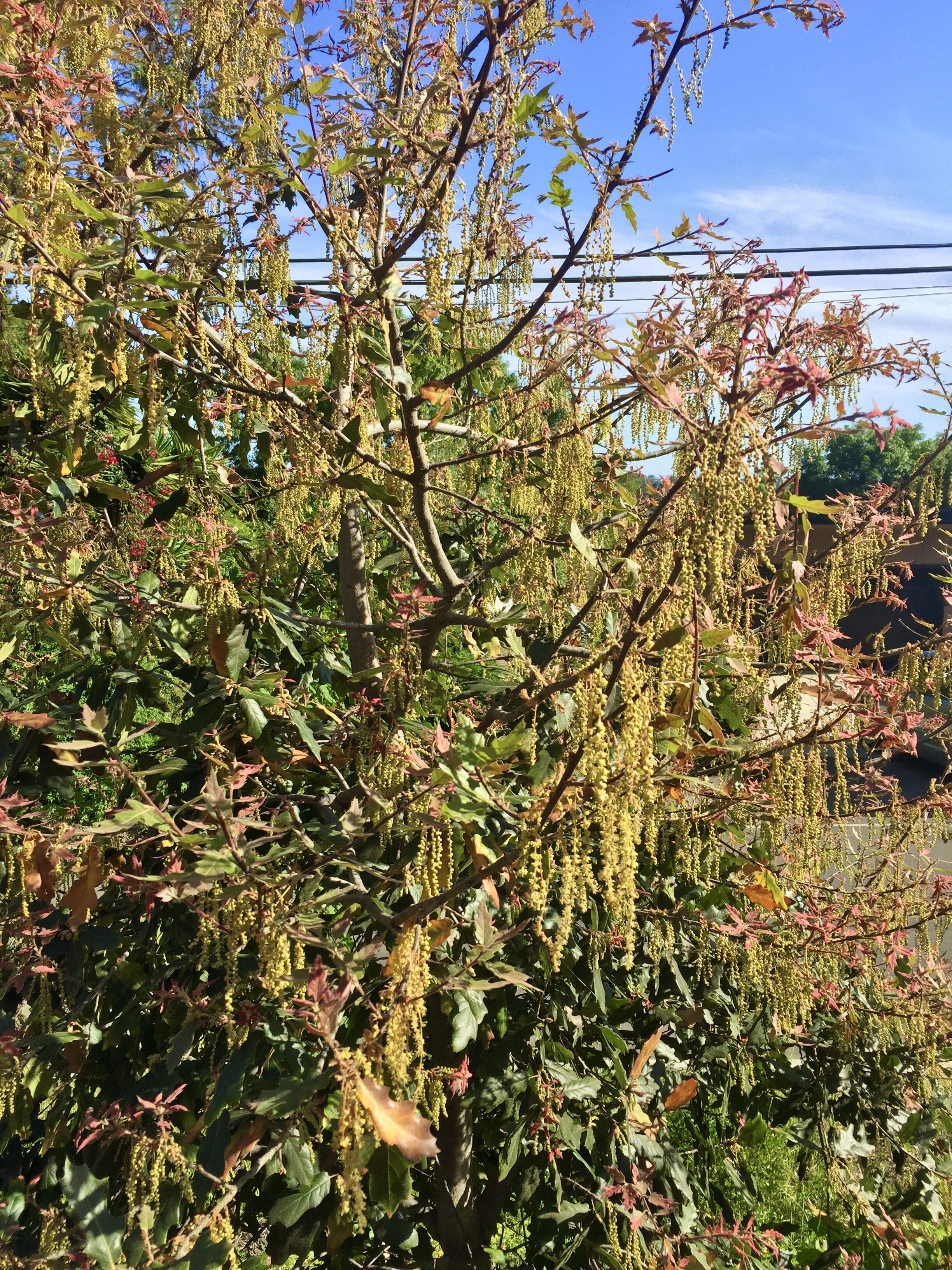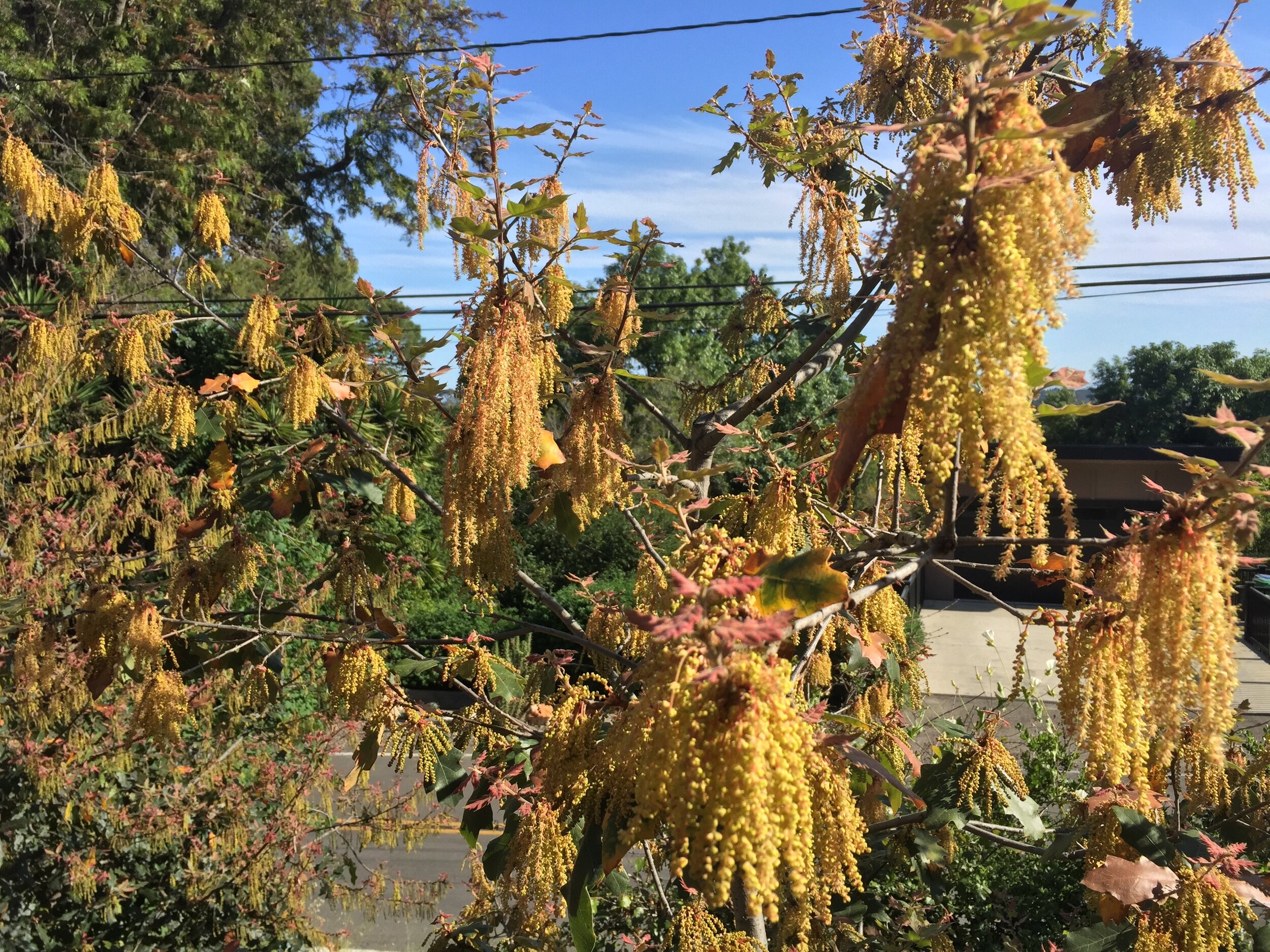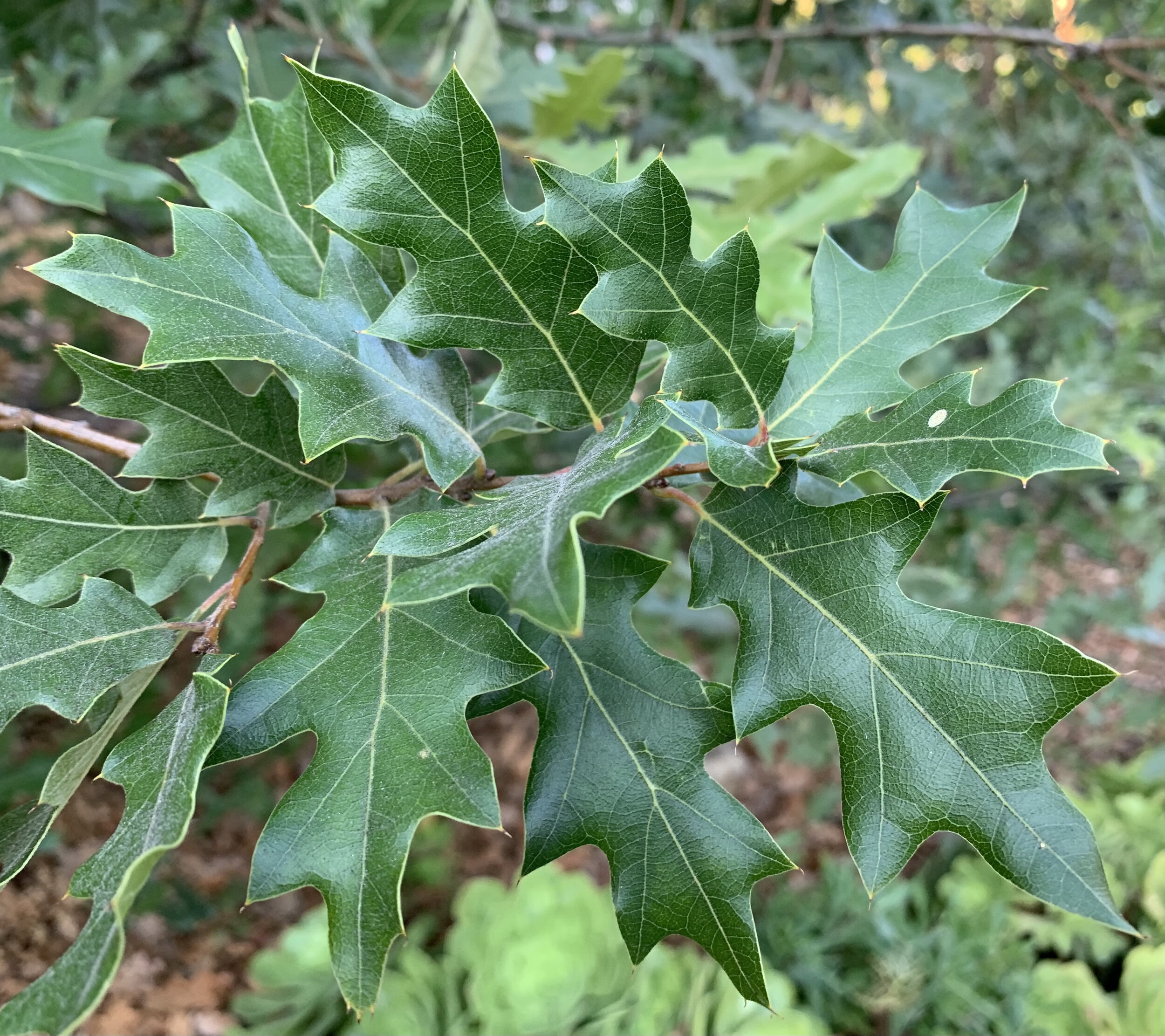Chisos Oracle Oak
Quercus gravesii x agrifolia
To capture this hybrid required growing 500 acorns from a pair of Chisos Red Oaks (Quercus gravesii) growing in the Shields Oak Grove at the University of California, Davis. These acorns were sprouted at Calaveras Nursery in Valley Springs, then grown into seedlings at the original Oaktopia nursery, at Green Valley Village, outside, Sebastopol. Only 15 of the 500 survived, but a few of those survivors grew vigorously.
The 15 were clearly hybrid. We watched these few (3% of total) grow in the nursery rows, all their siblings died. Their leaves of the 15 were quite different from their siblings, and tree performance was staggeringly different. The 15 survivors were grown on at a large Central Valley nursery, where they grew nicely. A dozen years later, 4 of the trees are growing in my yard, after having spent time in 4 different nurseries.
This tree is a rare example of what might be called a half-native hybrid. These trees are typically created accidentally, often in arboreta settings. They are rarely captured, and usually mis-identified. And while not all half-native hybrids show favorable adaptations, the best of these these trees are showing real potential in the California landscape.
This particular hybrid is an example of gene flow within the oak genus, bringing new genes, and new adaptations, to an existing native tree genome. In evolutionary terms, gene flow is the key to plant adaptation during periods of climate change. There is a great debate as to whether or not there are sufficient oak genes present in California to handle the range of climate changes that California will experience in coming decades and centuries. As we continue down our high carbon emission path into the apocacene, the chance seems to shrink daily.
Which leads us directly back to half-native hybrid trees, and the Chisos Oractle oak shown here. Given the general direction of climate change, with climate zones moving poleward, there is a general principle of looking the other direction for genes to flow. The non-local parent of this tree, the Chisos red oak (Quercus gravesii), grows in southern Texas and northern Mexico, which is the right direction for California.
Chisos red oak also grows in an arid monsoonal climate, with clear analogs to California climates. Interestingly, irrigated landscapes in California are already monsoonal landscapes, though they are rarely described as such. With a recent trend toward increasing summer and monsoonal rainfall in California, the kind of gene flow embodied in the Chisos oracle hybrid oak may be needed to ensure continuity of California native Quercus gentics into a climate changed future.
The Chisos red oak is also genetically very closely related to all the California black oaks, a cousin species really. The California black oaks include the coast live oak (Quercus agrifolia), which is the purported pollen parent in this case, so the two species show a high degree of compatibility. For example, California scrub jays show a clear preference for the acorns of Chisos oracle hybrid oaks. The Chisos oracle oak is highly recommended for further experimentation in coastal California.
